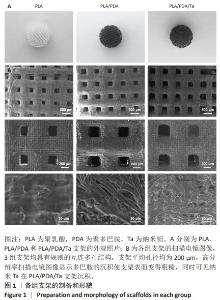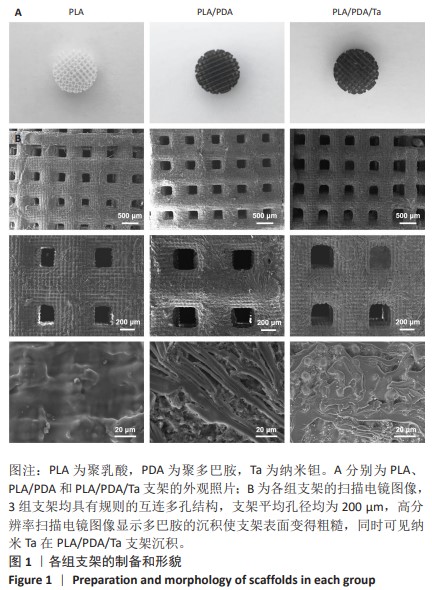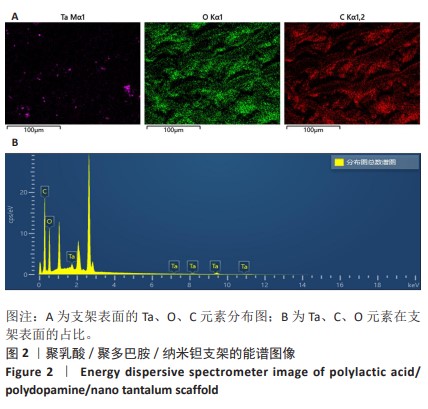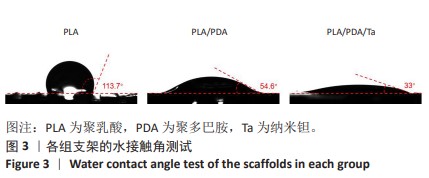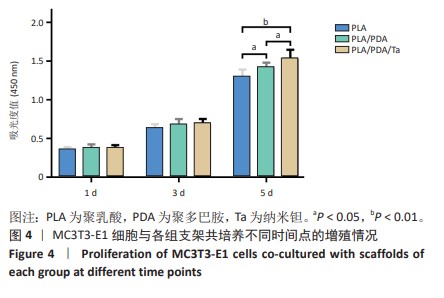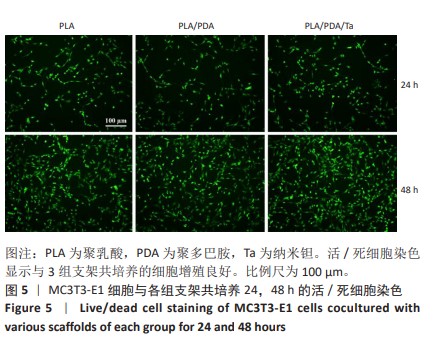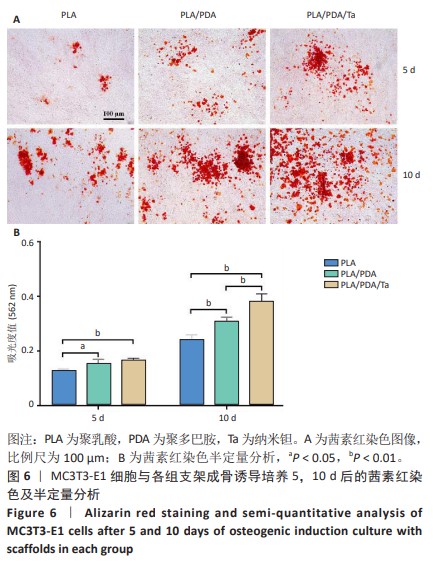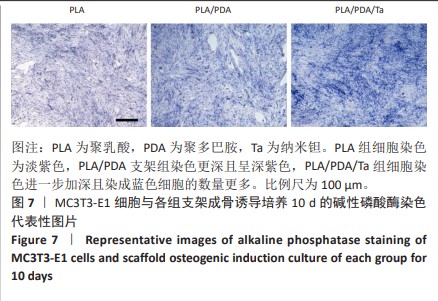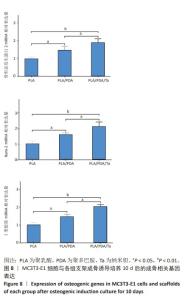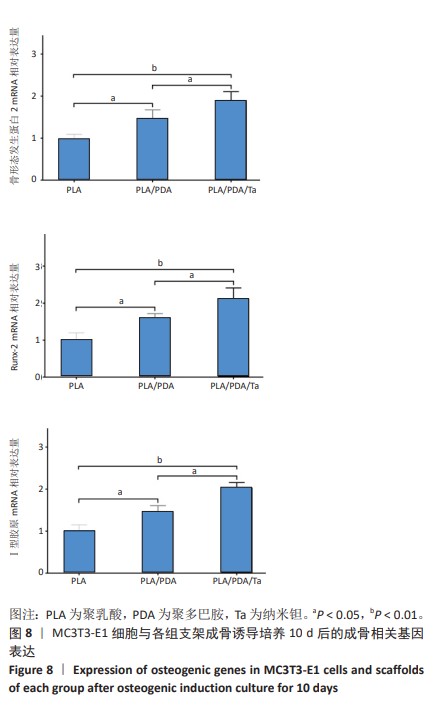[1] YUAN Q, BAO B, LI M, et al. Bioactive Conjugated Polymer-Based Biodegradable 3D Bionic Scaffolds for Facilitating Bone Defect Repair. Adv Healthc Mater. 2023:e2302818. doi: 10.1002/adhm.202302818.
[2] LI WW, WU YT, ZHANG X, et al. Self-healing hydrogels for bone defect repair. RSC Adv. 2023;13:16773-16788.
[3] MANCUSO E, SHAH L, JINDAL S, et al. Additively manufactured BaTiO3 composite scaffolds: A novel strategy for load bearing bone tissue engineering applications. Mater Sci Eng C Mater Biol Appl. 2021;126:112192.
[4] POH PS, LINGNER T, KALKHOF S, et al. Enabling technologies towards personalization of scaffolds for large bone defect regeneration. Curr Opin Biotechnol. 2022;74:263-270.
[5] SHIBLI JA, NAGAY BE, SUÁREZ LJ, et al. Bone Tissue Engineering Using Osteogenic Cells: From the Bench to the Clinical Application. Tissue Eng Part C Methods. 2022;28(5):179-192.
[6] FENG Y, ZHU S, MEI D, et al. Application of 3D Printing Technology in Bone Tissue Engineering: A Review. Curr Drug Deliv. 2021;18(7): 847-861.
[7] ZHANG L, YANG G, JOHNson BN, et al. Three-dimensional (3D) printed scaffold and material selection for bone repair. Acta Biomater. 2019; 84:16-33.
[8] KHALAF AT, WEI Y, WAN J, et al. Bone Tissue Engineering through 3D Bioprinting of Bioceramic Scaffolds: A Review and Update. Life (Basel). 2022;12(6):903.
[9] BISHT B, HOPE A, MUKHERJEE A, et al. Advances in the Fabrication of Scaffold and 3D Printing of Biomimetic Bone Graft. Ann Biomed Eng. 2021;49(4):1128-1150.
[10] PESARANHAJIABBAS E, MISRA M, MOHANTY AK. Recent progress on biodegradable polylactic acid based blends and their biocomposites: A comprehensive review. Int J Biol Macromol. 2023;253(Pt 1):126231.
[11] BAPTISTA R, GUEDES M. Morphological and mechanical characterization of 3D printed PLA scaffolds with controlled porosity for trabecular bone tissue replacement. Mater Sci Eng C Mater Biol Appl. 2021;118: 111528.
[12] WANG Q, QIAO Y, CHENG M, et al. Tantalum implanted entangled porous titanium promotes surface osseointegration and bone ingrowth. Sci Rep. 2016; 6:26248.
[13] HWANG C, PARK S, KANG IG, et al. Tantalum-coated polylactic acid fibrous membranes for guided bone regeneration. Mater Sci Eng C Mater Biol Appl. 2020;115:111112.
[14] CUI J, ZHANG S, HUANG M, et al. Micro-nano porous structured tantalum-coated dental implants promote osteogenic activity in vitro and enhance osseointegration in vivo. J Biomed Mater Res A. 2023; 111(9):1358-1371.
[15] ZHANG C, ZHOU Z, LIU N, et al. Osteogenic differentiation of 3D-printed porous tantalum with nano-topographic modification for repairing craniofacial bone defects. Front Bioeng Biotechnol. 2023;11:1258030.
[16] HU G, ZHU Y, XU F, et al. Comparison of surface properties, cell behaviors, bone regeneration and osseointegration between nano tantalum/PEEK composite and nano silicon nitride/PEEK composite. J Biomater Sci Polym Ed. 2022;33(1):35-56.
[17] EL YAKHLIFI S, BALL V. Polydopamine as a stable and functional nanomaterial. Colloids Surf B Biointerfaces. 2020;186:110719.
[18] ZHANG C, OU Y, LEI WX, et al. CuSO4/H2O2-Induced Rapid Deposition of Polydopamine Coatings with High Uniformity and Enhanced Stability. Angew Chem Int Ed Engl. 2016;55(9):3054-3057.
[19] TANG P, HAN L, LI P, et al. Mussel-Inspired Electroactive and Antioxidative Scaffolds with Incorporation of Polydopamine-Reduced Graphene Oxide for Enhancing Skin Wound Healing. ACS Appl Mater Interfaces. 2019;11(8):7703-7714.
[20] XIE X, TANG J, XING Y, et al. Intervention of Polydopamine Assembly and Adhesion on Nanoscale Interfaces: State-of-the-Art Designs and Biomedical Applications. Adv Healthc Mater. 2021;10(9):e2002138.
[21] LIU Y, HAN Y, DONG H, et al. Ca2+-Mediated Surface Polydopamine Engineering to Program Dendritic Cell Maturation. ACS Appl Mater Interfaces. 2020;12(3):4163-4173.
[22] YAZDI MK, ZARE M, KHODADADI A, et al. Polydopamine Biomaterials for Skin Regeneration. ACS Biomater Sci Eng. 2022;8(6):2196-2219.
[23] WEI H, CUI J, LIN K, et al. Recent advances in smart stimuli-responsive biomaterials for bone therapeutics and regeneration. Bone Res. 2022; 10(1):17.
[24] POSKUS MD, WANG T, DENG Y, et al. Fabrication of 3D-printed molds for polydimethylsiloxane-based microfluidic devices using a liquid crystal display-based vat photopolymerization process: printing quality, drug response and 3D invasion cell culture assays. Microsyst Nanoeng. 2023;9:140.
[25] OKORUWA L, SAMENI F, BORISOV P, et al. 3D Printing Soft Magnet: Binder Study for Vat Photopolymerization of Ferrosilicon Magnetic Composites. Polymers (Basel). 2023;15(16):3482.
[26] ZHAO Y, ZHONG J, WANG Y, et al. Photocurable and elastic polyurethane based on polyether glycol with adjustable hardness for 3D printing customized flatfoot orthosis. Biomater Sci. 2023;11(5):1692-1703.
[27] MADŽAREVIĆ M, IBRIĆ S. Evaluation of exposure time and visible light irradiation in LCD 3D printing of ibuprofen extended release tablets. Eur J Pharm Sci. 2021;158:105688.
[28] ALFIERI ML, WEIL T, NG DYW, et al. Polydopamine at biological interfaces. Adv Colloid Interface Sci. 2022;305:102689.
[29] 严格,乔鞾华,曹红,等.聚多巴胺的表面修饰功能在组织工程的应用进展[J].中国生物工程杂志,2020,40(12):75-81.
[30] DENG Z, WANG W, XU X, et al. Biofunction of Polydopamine Coating in Stem Cell Culture. ACS Appl Mater Interfaces. 2021;13:10748-10759.
[31] 刘宗光,屈树新,翁杰.聚多巴胺在生物材料表面改性中的应用[J].化学进展,2015,27(2):212-219.
[32] YE X, LI L, LIN Z, et al. Integrating 3D-printed PHBV/Calcium sulfate hemihydrate scaffold and chitosan hydrogel for enhanced osteogenic property. Carbohydr Polym. 2018;202:106-114.
[33] QI J, WANG Y, CHEN L, et al. 3D-printed porous functional composite scaffolds with polydopamine decoration for bone regeneration. Regen Biomater. 2023;10:rbad062. doi: 10.1093/rb/rbad062.
[34] GUO Y, XIE K, JIANG W, et al. In Vitro and in Vivo Study of 3D-Printed Porous Tantalum Scaffolds for Repairing Bone Defects. ACS Biomater Sci Eng. 2019;5(2):1123-1133.
[35] LU MM, WU PS, GUO XJ, et al. Osteoinductive effects of tantalum and titanium on bone mesenchymal stromal cells and bone formation in ovariectomized rats. Eur Rev Med Pharmacol Sci. 2018;22(21): 7087-7104.
[36] XUE Y, ZHU Z, ZHANG X, et al. Accelerated Bone Regeneration by MOF Modified Multifunctional Membranes through Enhancement of Osteogenic and Angiogenic Performance. Adv Healthc Mater. 2021;10(6):e2001369.
[37] YIN W, LIU S, DONG M, et al. A New NLRP3 Inflammasome Inhibitor, Dioscin, Promotes Osteogenesis. Small. 2020;16(1):e1905977.
[38] ZHOU L, WANG J, MU W. BMP-2 promotes fracture healing by facilitating osteoblast differentiation and bone defect osteogenesis. Am J Transl Res. 2023;15(12):6751-6759.
[39] ZENG L, HE H, SUN M, et al. Runx2 and Nell-1 in dental follicle progenitor cells regulate bone remodeling and tooth eruption. Stem Cell Res Ther. 2022;13:486.
[40] CLAEYS L, STORONI S, EEKHOFF M, et al. Collagen transport and related pathways in Osteogenesis Imperfecta. Hum Genet. 2021;140(8): 1121-1141.
[41] QIAN H, LEI T, YE Z, et al. From the Performance to the Essence: The Biological Mechanisms of How Tantalum Contributes to Osteogenesis. Biomed Res Int. 2020;2020:5162524.
[42] ZHU H, JI X, GUAN H, et al. Tantalum nanoparticles reinforced polyetheretherketone shows enhanced bone formation. Mater Sci Eng C Mater Biol Appl. 2019;101:232-242. |
